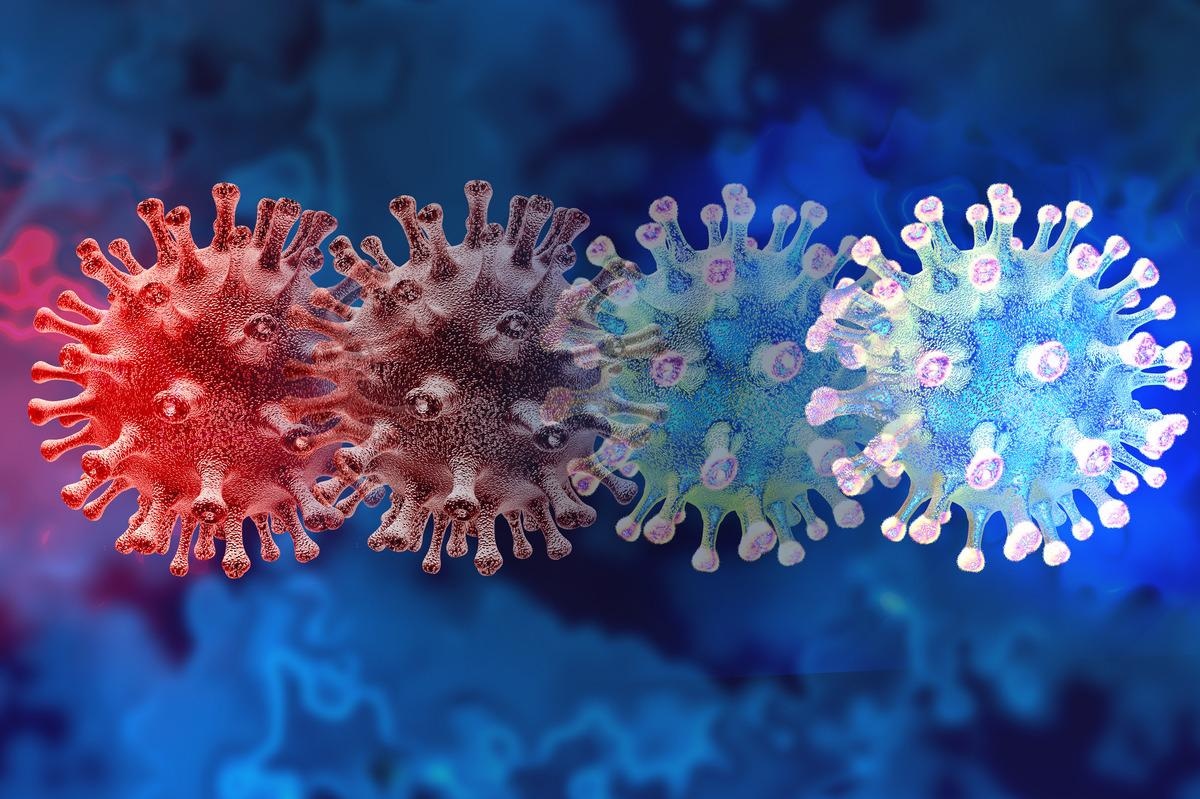Study highlights immune escape mutations in viral N-terminal domain supersite of SARS-CoV-2 spike variants
In a recent study posted to the bioRxiv* pre-print server, researchers characterized severe acute respiratory syndrome coronavirus 2 (SARS-CoV-2) spike (S) isolates extracted from the samples of two individuals infected with the virus in Peru (ΔN25) and Brazil (ΔN135) in January 2021.

The S variants had dramatically large and rare deletions in a small beta-sheet on top of the N-terminal domain (NTD) galectin fold (βN3N5). Additionally, the ΔN135 isolate had a signal peptide P9L mutation in the receptor-binding domain (RBD) of its S that disrupted the formation of 15-136 disulfide bonds (DS15-136) and consequently impacted the structural architecture of NTD.
The S1 subunit of SARS-CoV-2 S glycoprotein houses the NTD and RBD which are targets of SARS-CoV-2 neutralizing antibodies (nAbs) and escape mutations. Interestingly, many SARS-CoV-2 variants have small deletions in the exposed protruding NTD loops.
About the study
In the present study, researchers used high-resolution single-particle electron cryo-microscopy (Cryo-EM) to examine the function of both S isolates and determine how despite such large deletions in their NTD and disulfide loss, they folded correctly and maintained their fusion capacity.
The team performed a cell-cell fusion assay using a green fluorescent protein (GFP) to visualize syncytia formation to compare the fusion activity of S of ΔN25 and ΔN135 and the SARS-CoV-2 wild-type Wuhan-Hu-1 (WA1) strain.
For their biochemical and structural characterization, the researchers produced soluble versions of the variant S in transiently transfected expi293F cells, and for antigenic assessment, they performed biolayer interferometry (BLI). The team measured the binding affinity of angiotensin-converting enzyme 2 (ACE2)-Fragment, crystallizable (Fc), to the ΔN25 and ΔN135 spikes and the WA1 S; likewise, they measured S binding activity against a panel of six monoclonal antibodies (MAbs) – S2M11, S2E12, C144, 2-43, S309 and COVA2-15.
Lastly, the researchers performed liquid chromatography-mass spectrometry (LC-MS) from a tryptic digest of purified WA1 S and the ΔN135 S protein to determine the N-terminal residue of the S proteins.
Study findings
Compared to the WA1 S, the quaternary structure of the ΔN25 S was less stable and showed a higher fraction of monomeric S. BLI results showed that the ΔN135 S binding was most impacted, and MAbs 2 to 43 and COVA2 to COVA15 completely lost binding to the variant S.
Due to deletions, both S isolates ΔN25 and ΔN135 did not bind the NTD-specific antibodies; additionally, ΔN135 S mutations impacted the binding of most of the RBD-specific antibodies. The WA1 S protein was cleaved after position 13. Contrastingly, for the ΔN135 S protein, peptides were not detected up to N-terminal residue 22.
LC-MS showed truncation of the N-terminus in the ΔN25 S derived from the C.37 lineage, a variant of concern (VOC), by seven additional residues in the N5 loop. As a result, it completely lost the N2 loop, its N5 loop shifted towards the N2 and N1 loops concurrently, and the N3 loop shifted to a position previously acquired by N5.
Due to these N-loop shifts, the three-strand β-sheet formed by the N3 hairpin and N5 (βN3N5) on top of the galectin fold was lost, resulting in major antigenic remodeling of the NTD supersite. Hence the ΔN135 variant acquired more open, 73% 1-RBD up, 23% RBD-down compared to 20% 1-RBDup and 80% RBD-down for the WA1 variant.
Conclusions
In the past two years, the NTD domain of the SARS-CoV-2 S has become a hotspot for deletions, consistent with phylogenetic trees of SARS-CoV-2 S. Within NTD, these deletions are nested in residues 69 to 70, 141 to 143, 156 to 159, and 242 to 245, and deletions at these sites recur independently in a large number of unrelated lineages.
CryoEM analysis revealed a large capacity for deletions in N2, N3, and N5 loops, together with the ability to remove N1 with the ΔDS15-136 mechanism to rearrange all surrounding loops for allowing complete remodeling of the NTD supersite. The mechanism of reshaping the loops via ΔDS15-136 seems to have evolved independently in multiple branches of the SARS-CoV-2 phylogenetic tree, suggesting its crucial role in future VOCs.
In both the Delta and Omicron VOCs, deletions in N2, N3, and N5 loops are already firmly incorporated; likewise, ΔDS15-136 has been observed in other SARS-CoV-2 variants, albeit at low frequencies. For instance, cases of Omicron BA.1 and BA.1.1 sub-lineages have been reported to have ΔDS15-136 in some US states. Overall, ΔDS15-136 is pervasive on the phylogenetic tree of S and even geographically.
To conclude, understanding the constraints of the NTD deletions and the balance between NTD function and structural integrity will be crucial as collective immunity to SARS-CoV-2 will increase. As immune evasion will evolve as a fitness advantage for SARS-CoV-2, it will further reinforce the need to monitor all immune escape mutations.
*Important notice
bioRxiv publishes preliminary scientific reports that are not peer-reviewed and, therefore, should not be regarded as conclusive, guide clinical practice/health-related behavior, or treated as established information.
- Xiaodi Yu, et al. (2022). Convergence of immune escape strategies highlights plasticity of SARS-CoV-2 spike. bioRxiv. doi: https://doi.org/10.1101/2022.03.31.486561 https://www.biorxiv.org/content/10.1101/2022.03.31.486561v1
Posted in: Medical Science News | Disease/Infection News | Healthcare News
Tags: ACE2, Angiotensin, Angiotensin-Converting Enzyme 2, Antibodies, Assay, binding affinity, Cell, Chromatography, Coronavirus, Coronavirus Disease COVID-19, Electron, Enzyme, Fluorescent Protein, Glycoprotein, immunity, Liquid Chromatography, Mass Spectrometry, Microscopy, Mutation, Omicron, Peptides, Protein, Receptor, Respiratory, SARS, SARS-CoV-2, Severe Acute Respiratory, Severe Acute Respiratory Syndrome, Spectrometry, Syndrome, Virus

Written by
Neha Mathur
Neha is a digital marketing professional based in Gurugram, India. She has a Master’s degree from the University of Rajasthan with a specialization in Biotechnology in 2008. She has experience in pre-clinical research as part of her research project in The Department of Toxicology at the prestigious Central Drug Research Institute (CDRI), Lucknow, India. She also holds a certification in C++ programming.
Source: Read Full Article
